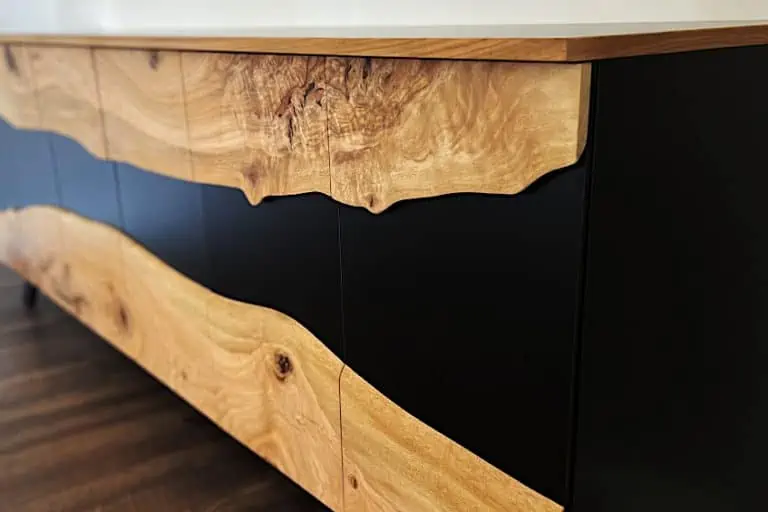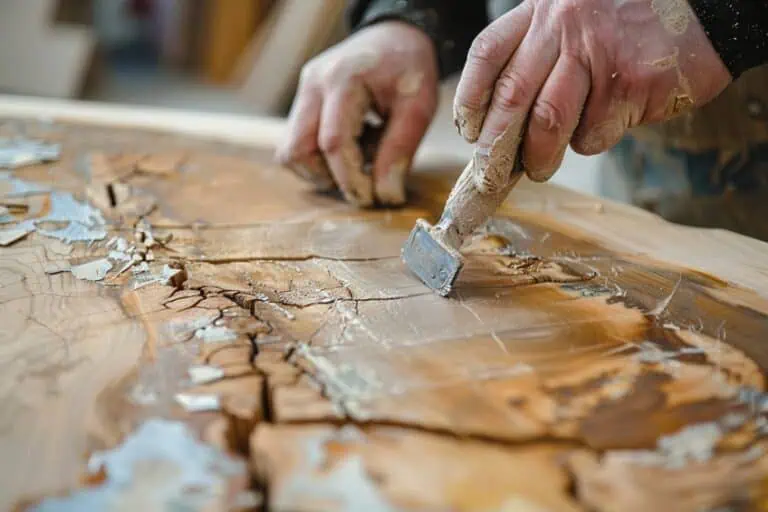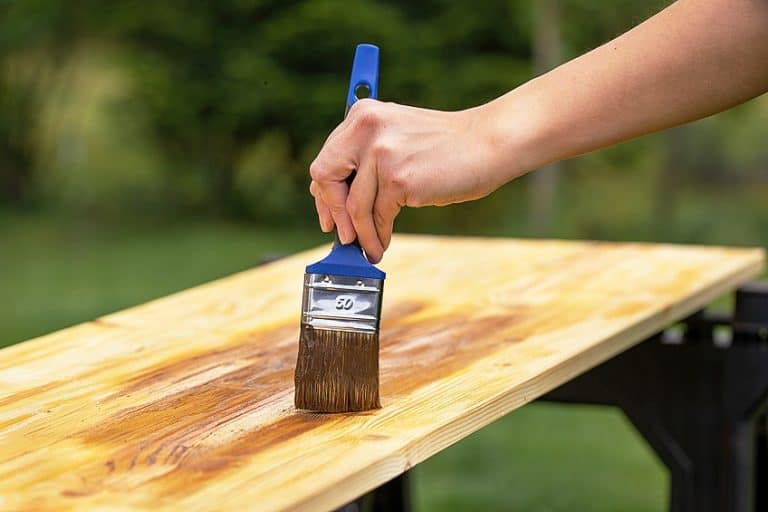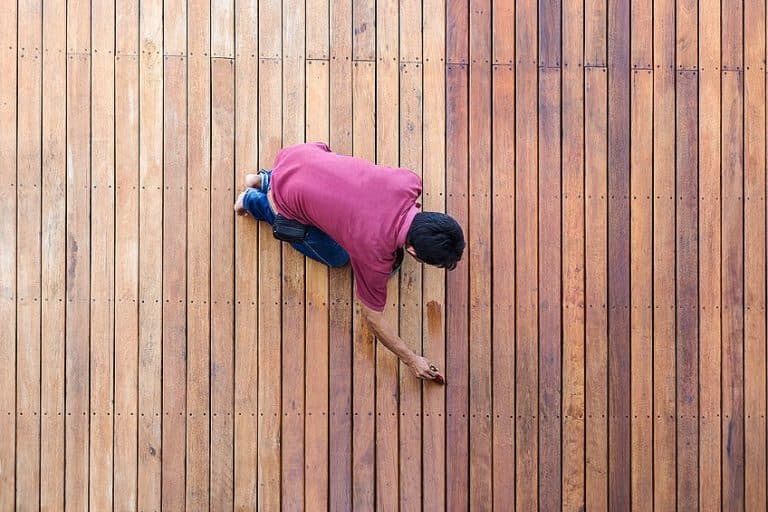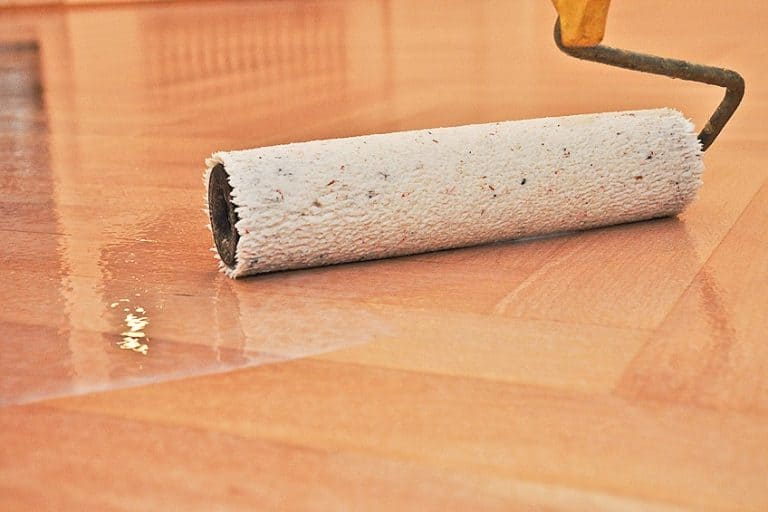What Is Spar Urethane? – Exterior Wood Varnish Guide
In the past, people would go to great lengths to protect their wooden tools, vessels, and workpieces from the elements. This often required constant application of various preservatives such as linseed oil, tung oil, and naturally occurring waxes. However, these days, there are many other options when it comes to protecting your wooden workpieces. One of the most popular of these is spar urethane, but what is spar urethane and how does it work? Let’s have a look and see exactly what this substance is, why it is so popular, and how to use it effectively.
What Is Spar Urethane?
Spar urethane derives from wood coatings known as long-oil finishes designed to ensure maximum flexibility on surfaces that expand and contract on a regular basis, like wooden boats. Modern spar varnishes contain the same ingredients as polyurethane finishes, but the ratio’s of these differ, resulting in a clear and hard, but brittle finish for polyurethane, and a highly durable, flexible, but yellowish and glossy finish for spar urethane.

Oil-based versions of spar urethane have been used for a long time, suggesting that it is probably pretty good at its job.
Spar urethane consists of resins, solvents, and plastic urethane. There are two primary types of spar urethane that you’ll encounter in your life, namely the original oil-based spar urethane and a newer and safer water-based spar urethane. As you’ve probably put together the key difference between these two variants is their base elements that create different types of consistencies and levels of durability.
The Properties of Spar Urethane
Considering that there are many things that spar urethane is used for, we thought it would be a good idea to give you an idea of what some of its properties are. Unlike other urethane variations, spar urethane is quite coveted and has a unique appearance, smell, consistency, and chemical composition that make it easily identifiable and uniquely robust.
Color
Spar urethane has many characteristics that it shares with other types of urethane products, but it has many that make it quite unique as well. Some of its identifying characteristics are its color, which is mostly clear, but once it’s been applied to a wooden surface or has been viewed in large enough volumes tends to have a yellow tint to it.
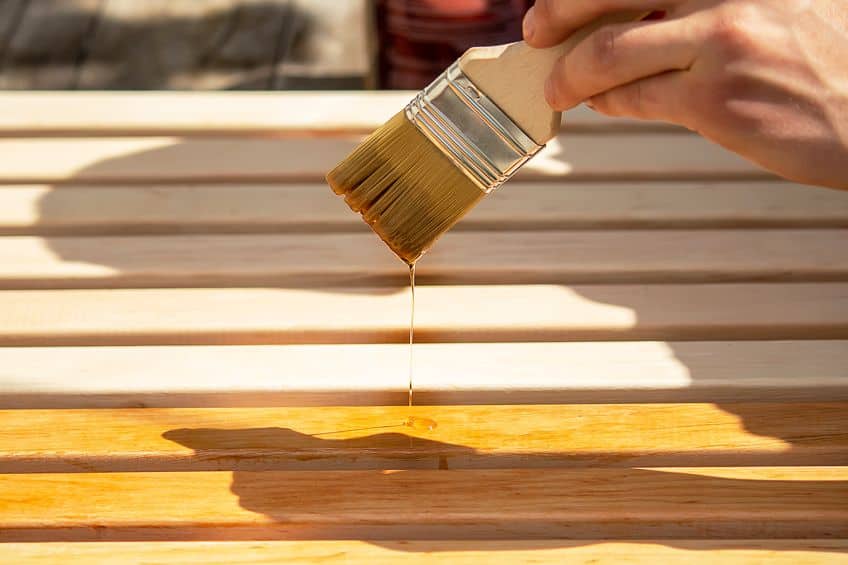
Water Resistant
Spar urethane also has a number of robust characteristics that have made it popular over the years, particularly in applications where external forces would damage wooden surfaces. For one, spar urethane is resistant to water, and even though it isn’t what we would define as waterproof, it’s pretty close and has been used on a number of seafaring vessels.

Heat and UV Resistant
It has proven to be durable when exposed to other forces as well. Other chemicals in its composition make it highly resistant to the effects of sunlight and by extension UV radiation to a certain extent. Again, this has made spar urethane quite popular on a number of outdoor and indoor applications, especially ones where a workpiece will be left exposed to the elements for prolonged periods of time.
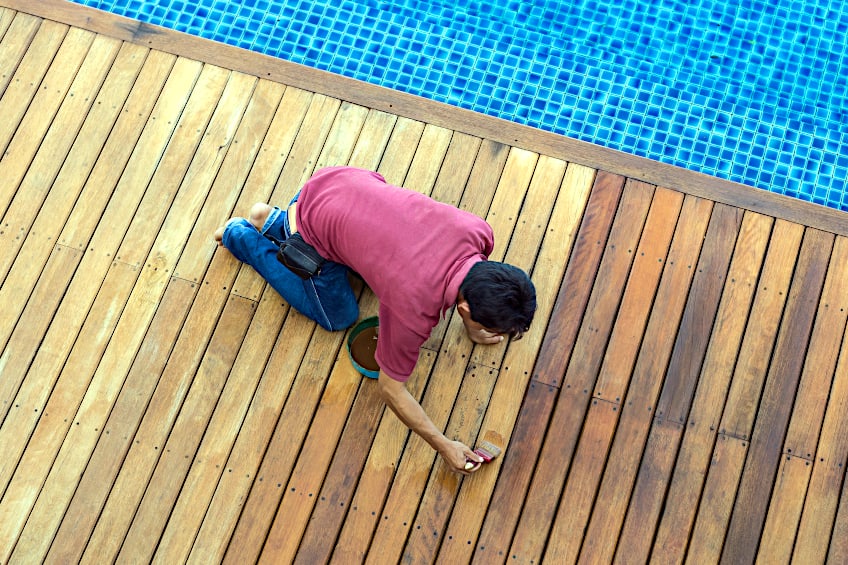
Impact and Abrasion Resistant
While this isn’t a property unique to spar urethane specifically, it is one that makes it incredibly sought after. When applied in sufficient thicknesses spar urethane can be an effective and long-lasting protective barrier for wooden objects like furniture and decking that rarely needs to be maintained or replaced, effectively ensuring that your workpieces will last a lifetime.
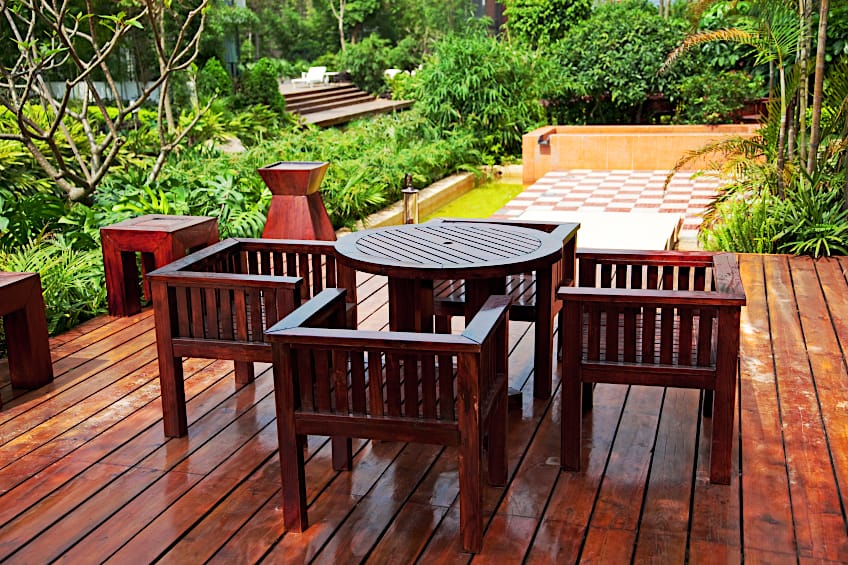
Flexibility
One of the most alluring characteristics of spar urethane is the fact that it can roll with punches. What do we mean? Well, wood has the ability to expand and contract based on forces that have been applied to it. Therefore, the ideal coatings should be able to do the same without breaking. Spar urethane is capable of expanding and contracting with wood quite easily and even reduces the effects of shifting weather conditions on it.

Retention of Gloss
If you’re applying a protective coating to your wooden workpiece we’re going to go out on a limb and say that you care about how it looks. If this is the case, you’ll be pleased to know that spar urethane has incredible gloss retention, which means that your workpiece will not only retain the look of its wood grain but will have a shiny look throughout its lifetime.

What Is the Difference Between Oil-Based and Water-Based Spar Urethane?
At the end of the day, these two are essentially the same substance but there are some things that you should take into account when choosing one. Oil-based spar urethane tends to be more popular than water-based ones, so let’s have a look at some of the differences between the two so you can see why most people prefer oil-based spar urethane.
Oil-Based Spar Urethane
Oil-based spar urethane is by far the most durable of the two, being able to withstand quite a bit of damage and prolonged exposure to some of the harshest elements. However, it does contain more far VOCs (volatile organic chemicals) than its water-based counterpart and takes far longer to dry. However, oil-based spray urethane can be applied effectively with far fewer coats than water-based spar urethane.
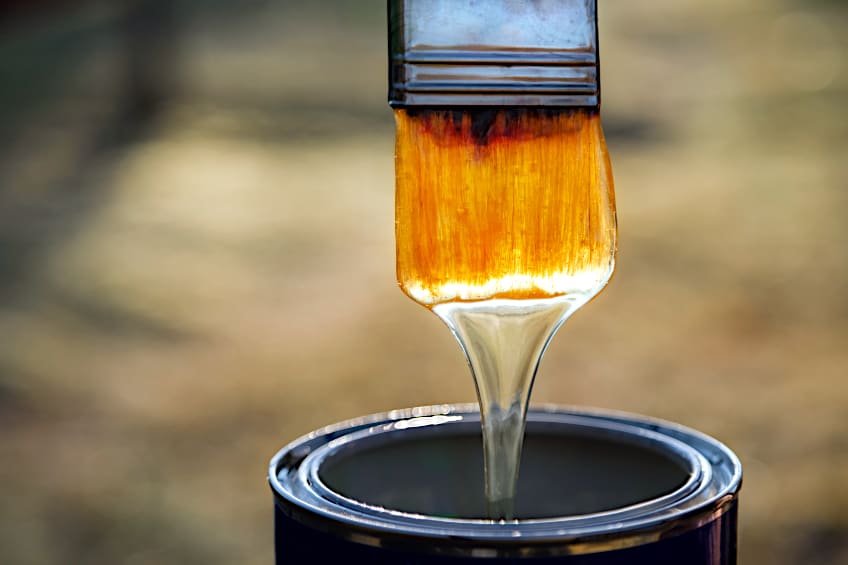
Water-Based Spar Urethane
While water-based spar urethane tends to be less popular than the oil-based variant, it is better suited for certain applications. Water-based spar urethane can be used in interior applications with greater ease due to it containing far fewer VOCs than oil-based spar urethane. It also dries and cures much quicker, but as a drawback, requires far more coats to be applied effectively.
What Are the Advantages of Spar Urethane?
While we mentioned some of the characteristics of spar urethane, we thought we’d cover some of the actual advantages of using it to protect your wooden workpieces. Keep in mind that some of these characteristics are shared by water-based spar urethane and even polyurethane, while others remain unique to oil-based spar urethane. The nice thing about spar urethane is that while it was designed for use outdoors, it can also be used on surfaces that need extra protection indoors. You could use it to protect your dining room table as well as your garden chairs if you wanted to, but in terms of spar urethane’s intended application, it was designed to be used for exterior surfaces, in fact, it was originally designed to protect the spars on boats (the long poles that hold up the sails).
Another advantage of spar urethane that is often taken for granted is how incredibly durable it is. After all, once it’s been applied, you don’t need to maintain it often. However, considering that spar urethane is resistant to changes in temperature, rain, snow, sunshine, UV, impact, and abrasion, we think that it deserves a little bit more praise every once in a while.

It is also quite cost-effective in the long run. There are many other protective coatings that you can choose from, including epoxy resin, wood treatment oils, varnishes, and even wood stains. However, many of these require regular maintenance, whereas a well-applied coat of spar urethane can last you for years, even though it can cost a lot more, especially in large volumes.
How to Apply Spar Urethane?
Wondering how to apply spar urethane? Spar urethane is quite a useful and robust tool, but if applied incorrectly the result can be messy and leave your workpiece looking a bit off-putting. That being said, we’ve prepared a short tutorial detailing how to apply spar urethane effectively to ensure that your workpiece looks great and is protected for a very long time.
Prepare Your Workspace
Working with any coating means that you’ll have to prepare not only your workpiece but your workspace as well. How do you prepare your workspace when working with spar urethane you ask? The best place to start is to ensure that your workspace is well-ventilated and that you have a constant flow of air both in and out of your immediate area.
Why? Well, oil-based spar urethane in particular is loaded with VOCs, and when inhaled they can cause some discomfort and various other symptoms. You should also ensure that your workbench and flooring are protected by laying down a tarp or some old newspaper and securing it with some painter’s tape. Cured spar urethane can be tricky to remove, so it is best to be prepared.
Finally, you should ensure that you are well protected. Since you’ll be working in the presence of VOCs, you should ensure that you have a decent face mask and some eye protection. Then, just in case you manage to get some spar urethane on your hands, ensure that you are wearing gloves graded for use with these types of substances. Once you’re happy with the state of your workspace, you can move on to the next step in the process.

Prepare Your Surface
Just as you prepared your workspace it’s time to prepare your workpiece. Preparing your workpiece to receive a spar urethane finish is just as important as the coating itself. Preparing your workpiece poorly could mean that your spar urethane not only adheres poorly but will dry and cure poorly, leaving your workpiece looking less than desirable.
How do you prepare your workpiece to receive a spar urethane coating though? The first thing you should do is ensure that the surface of your workpiece is clean. How do you do this? With some good old-fashioned soap and water of course! Get some warm water, some soap, and a clean cloth, and get to work giving your workpiece a good once over.
When you’re happy with the job you’ve done cleaning, it’s time to sand the surface of your workpiece. This will remove some of the more conditioned wood on the surface and allow the spar urethane to seep into the wood’s pores and bond with the wood fibers. This provides both internal and external protection from the elements.
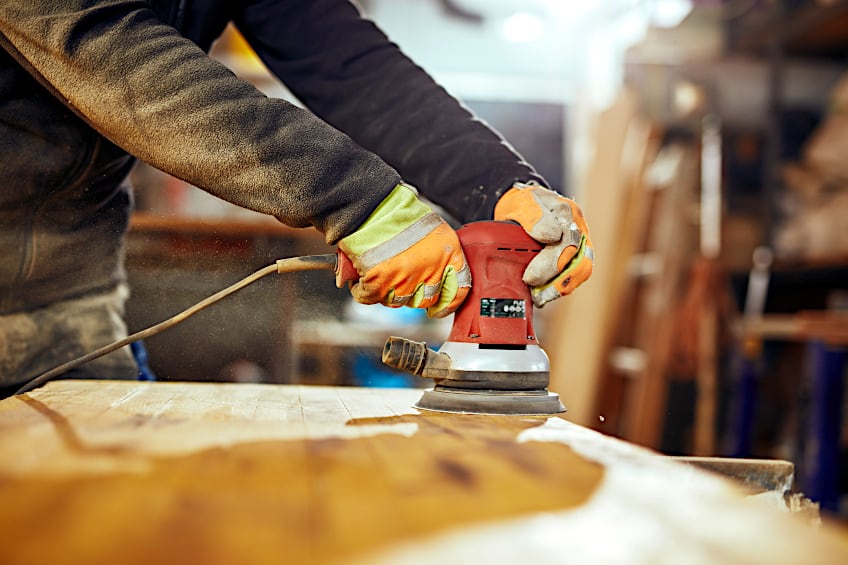
For this part of the preparation process, you can use either a power sander or some sandpaper depending on the size of your workpiece. The idea is to give it a light sanding all around, just be sure not to miss any spots. Once you’re done you can use a clean cloth or some compressed air to remove some of the loose wood particles from the surface of the board.
Apply Your Finish (Optional)
This might seem a bit redundant but if you’d like to apply paint or other wood treatment oil this would be the time to do it. Keep in mind that spar urethane has a bit of a yellow tint to it, so your finish will be slightly obscured if you choose to do so. If you are applying a finish, give it a light sand once it has dried for the manufacturer’s recommended time period before moving on to the next step in the process.
Apply Your Spar Urethane
Now for the moment you’ve been waiting for! Spar urethane is (historically) best applied with a large flat brush with natural bristles. How do you do so? Well, you can either work directly from the container or you can pour some out into a painter’s tray and work from there. If your workpiece is relatively small, the latter might prove to be more manageable.
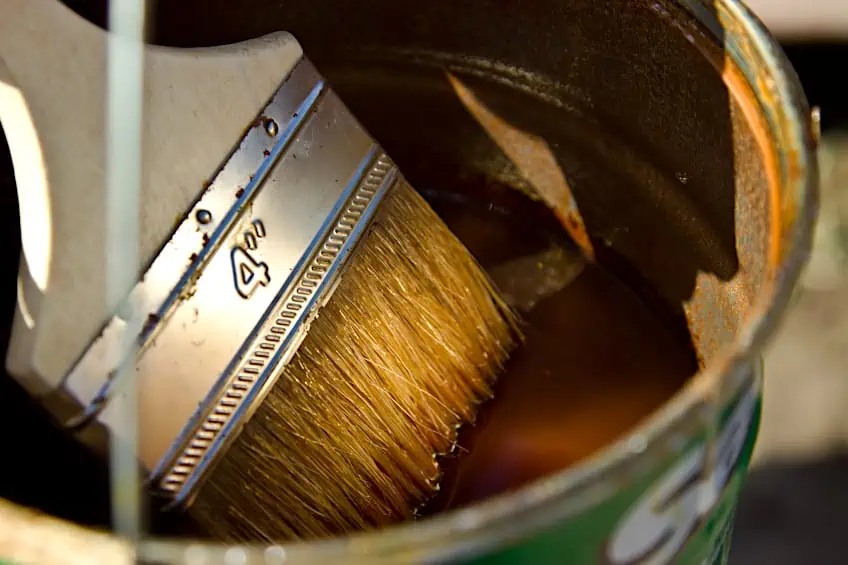
Now that you’re all prepared, it’s time to apply your spar urethane. Get some on your brush and start applying it along the length of your board. It is best to apply your spar urethane in a single direction to ensure that it does not appear to flow against the grain of the wood you have chosen. Ensure that you do not over or under-apply the coating in any areas of your board.
We recommend working from one end of the board to the other, and if your workpiece is particularly large, try tackling it in smaller sections, just don’t wait too long or your spar urethane might begin to dry. If your workpiece is circular or irregularly shaped, you could try working from the center out toward the edges, or vice versa.
Regardless of your method of approach, the idea is to achieve a holistic, even coating when applying your spar urethane. Once you’re happy with the job you’ve done applying the spar urethane, simply allow the coating to dry for a few hours before applying the next coat (if you’d like to), and once you’re satisfied, allow it to dry and cure for the manufacturer’s recommended time period.
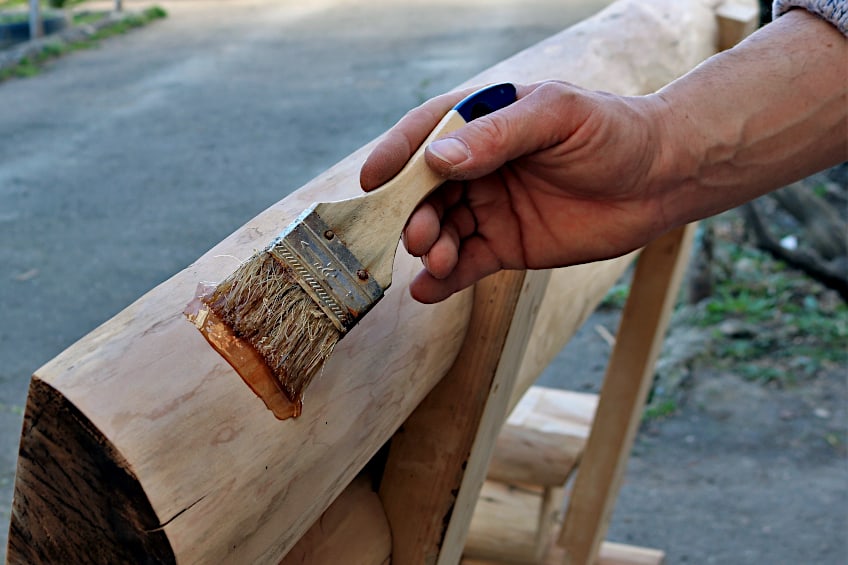
Applying Spar Urethane With a Sprayer
If the traditional method isn’t working for you, you could always take the modern approach and use a paint sprayer. This will take some more preparation on your part though, as you’ll have to dilute the spar urethane before you can pour it into your hopper. What do you dilute it with? Mineral spirits! You want a 1:1 ratio of spar urethane to mineral spirits, and then you can pour it into your hopper.
Now to spray your workpiece. You can use the same technique that you would use to apply paint, with the only difference being that you need to be at least 10 inches away from your workpiece due to the viscosity of the spar urethane. Ready to spray? Good. Start by spraying your workpiece and then move your wrist in one smooth, uninterrupted motion across the surface of your workpiece, only stopping when you’re slightly off the other end of the workpiece.
You want to apply even pressure to your trigger throughout the application process to ensure a uniform coat is applied on every pass. Again, if your workpiece is larger, section it off either visually or mentally so that you aren’t overwhelmed by the task at hand. Repeat this process until the entire workpiece has been coated (or the parts you intended to spray).
For this method, you might want to use some additional painter’s tape to cover up any sections that you don’t want to get any paint on. Remember that you have better fine motor control when using a brush compared to using a sprayer, so mistakes are far easier to make, and it can be a nightmare to remove this stuff even when wet.
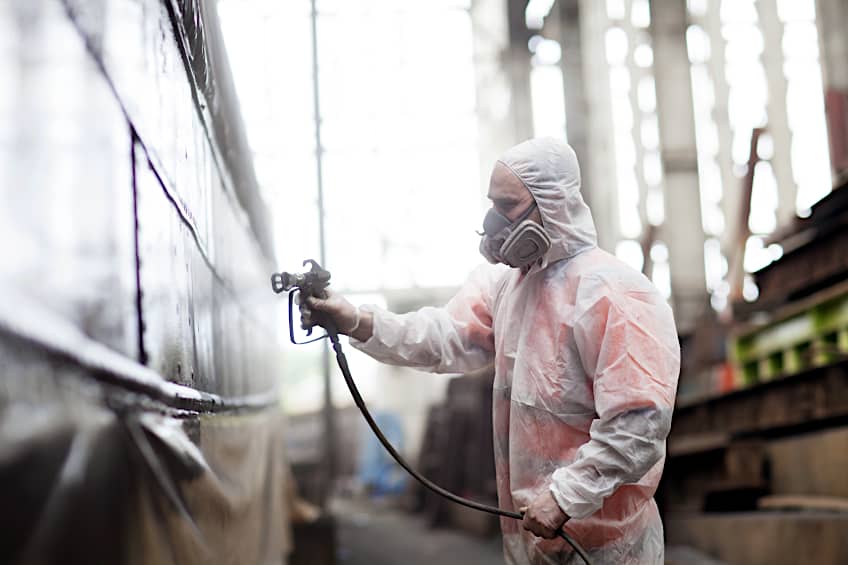
Once you’re done, you can allow your initial coat to dry before applying the next, just as you would when using a brush. Once you’ve applied your final coat, allow your spar urethane to dry for the manufacturer’s recommended time period before moving on to the next step in the process but ensure that no dust or other debris blows onto it while it dries and cures.
Applying Spar Urethane With a Cloth
While this might not be the most popular method of applying spar urethane it can be the most effective approach when working with smaller workpieces. Now, if you’ve ever seen or worked with spar urethane before reading this, you might think this is a bit of a silly approach considering the thickness of the substance. However, there is a way to alter its consistency. Just as you would when applying it using a paint sprayer, you’re going to dilute it with some mineral spirits. Again, you’re going to mix your spar urethane with some mineral spirits in a 1:1 ratio to ensure that it can be rubbed onto the workpiece without causing too much build-up on the cloth.
We recommend pouring some out into a container beforehand to ensure that it is more manageable. Once you have what you need, get a clean cloth and proceed one of two ways. You can either apply your spar urethane directly to the surface of your workpiece and spread it out with a cloth, or you can get some on your cloth and start rubbing it in that way.
This method is very much the same one you would use when rubbing in wood stain, except instead of massaging the spar urethane into the wood, you’re essentially going to be spreading it out over the surface of your workpiece. Again, this method is ideal for smaller workpieces, but if you have chosen it for a larger one, simply work from one end of the board to the other.
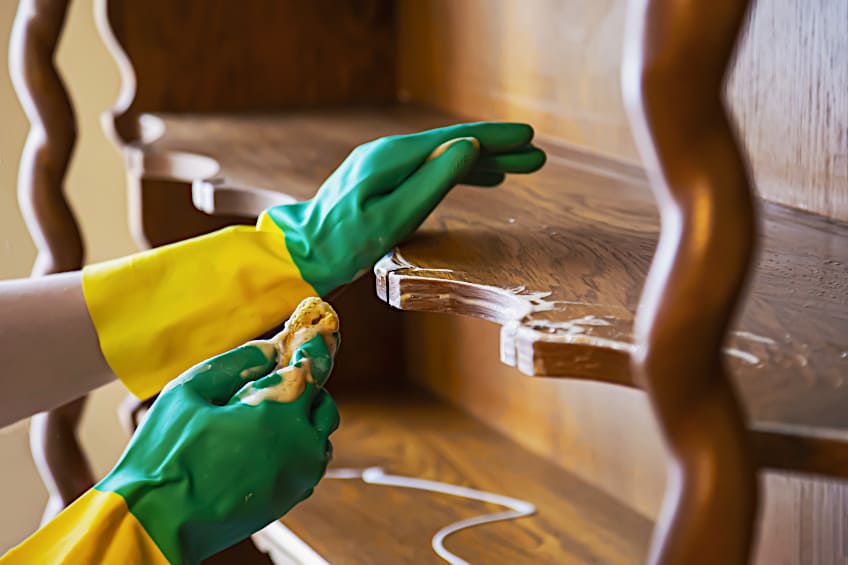
Again, if you are feeling a bit overwhelmed we recommend that you tackle the surface in sections to ensure that you get consistent and even coverage on the surface of your workpiece with the spar urethane. If your workpiece is irregularly shaped or circular you can work from the center of the workpiece outward, or vice versa.
This method can be both time-consuming and labor-intensive compared to using a brush or sprayer. However, if you have a smaller workpiece this might be the ideal approach because of the consistency and quantities that the other methods use to dispense the spar urethane. If you do choose to use this method, ensure that you wear your gloves and face mask as you will likely come into direct contact with the substance.
Reapplying Your Spar Urethane
There is some debate about how to apply more coats of spar urethane, but it’s entirely up to you. What do we recommend? Well, it doesn’t hurt to ensure that the surface is dry and give it a light sanding before applying additional coats of spar urethane, even if it is more time-consuming to do so. That being said, this will provide a smoother and even finish compared to simply applying another coat.
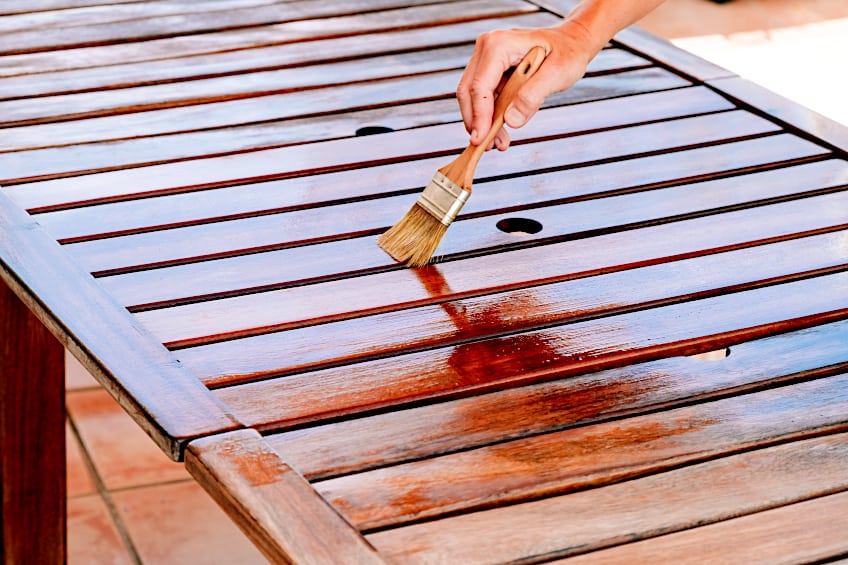
If you’re wondering how long you should wait to apply additional coats of spar urethane, this can vary depending on the type of urethane you’re working with and the brand and quality of the product. Generally speaking, you should wait an hour or two and ensure that the surface is solid before attempting to sand and apply an additional coating.
Now that you know what spar urethane is, what it is made of, what it is used for, what makes it so special, how it compares to other popular protective coatings, and how to apply it yourself, it’s time for you to get out there and put your newfound knowledge to the test! Remember that spar urethane contains VOCs, and that you should always wear the appropriate personal protective gear when handling it.
Frequently Asked Questions
Spar Urethane vs. Polyurethane: Which Is Better?
The spar urethane vs. polyurethane debate has been going on for a while, and comes down to finish, drying time, and flexibility. Spar urethane contains more oil, so it dries to a glossier and highly durable finish. The higher oil content does affect the color though, so unless you want your finish to have a yellowish tinge, use polyurethane. Despite its higher oil content, spar urethane dries faster than polyurethane, but can take very long to completely cure, unless you use a water-based version. Spar urethane is also more flexible than the hard brittle shell that results from a polyurethane varnish, so it is better suited for surfaces that will swell and shrink when the weather changes. One final thing to keep in mind is that spar urethane contains high levels of volatile organic compounds (VOC’s), so it requires greater levels of personal protection during application.
What Is Spar Urethane Used For?
If you’ve ever heard of spar urethane, you’ve probably wondered what it’s used for. What is spar urethane used for then? Well, essentially, it’s used for any hard-wearing application such as protecting the spars on boats, protecting exterior furnishings, and protecting particularly vulnerable workpieces.
Can You Use Spar Urethane Indoors?
Spar urethane can be used indoors, but is not really required, unless you have a surface that will take as much beating as an exterior one. However, if spar urethane is applied indoors or used on interior furnishings, you should ensure that the workspace is well-ventilated during the application process and during the curing of the spar varnish.

I have been into woodworking since 2005 and woodturning since 2011. Because of my love for wood and woodworking, I started woodhappen.com to teach other enthusiasts about how to finish and seal wood, the best woodworking tools, the different types of wood, and everything else related to woodworking! Read more about me here.


